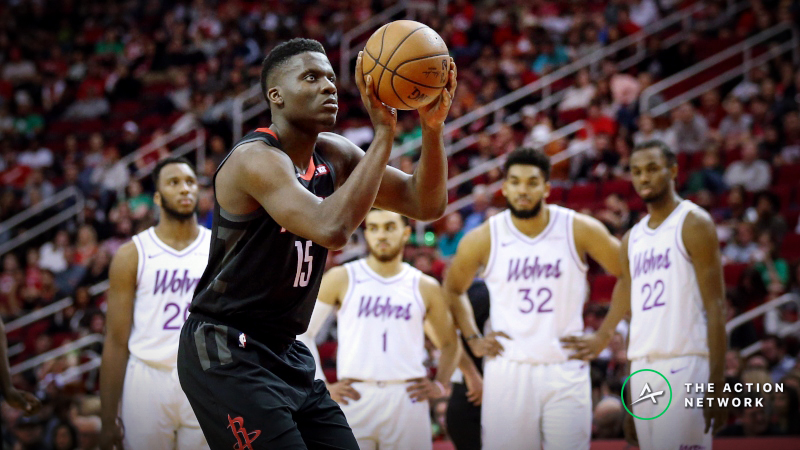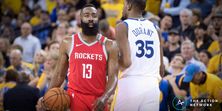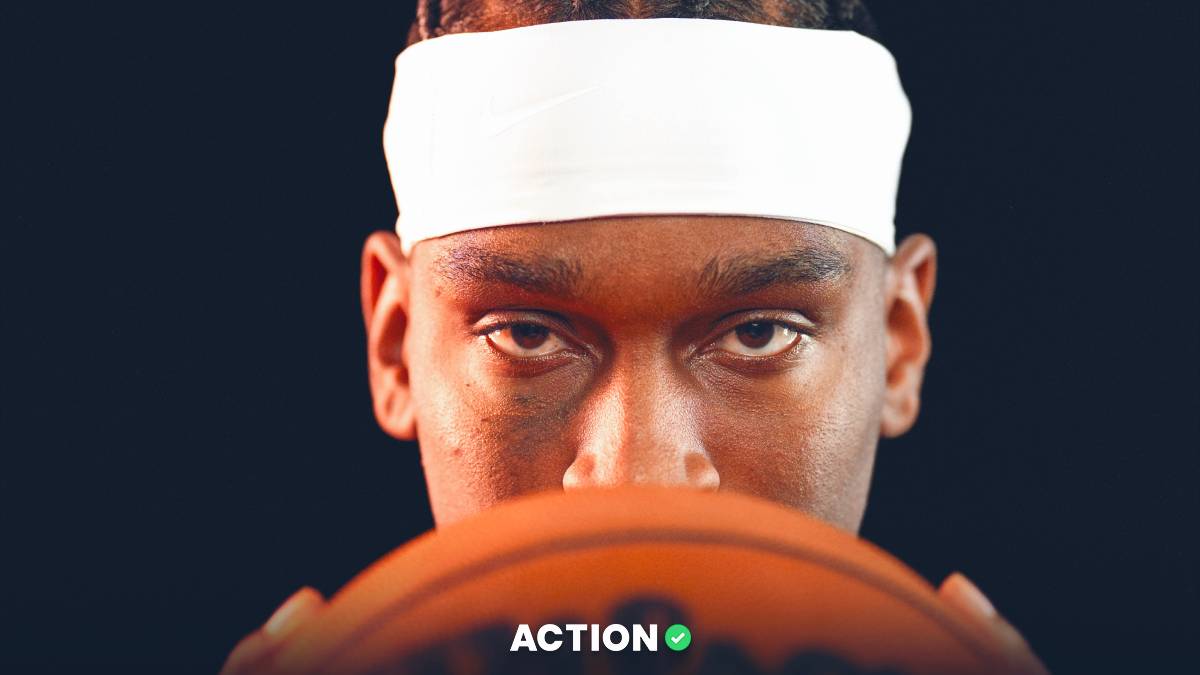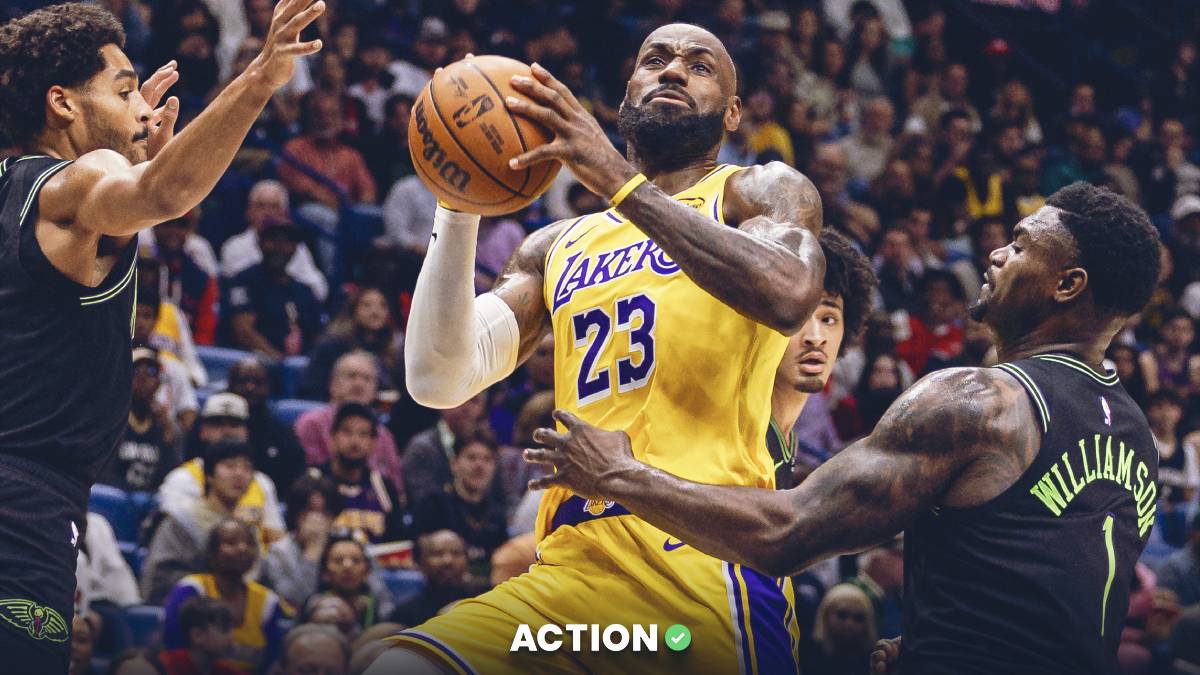- NBA teams foul less frequently when trailing at the end of games than in college basketball, which can impact the point spread.
- Are there reasons for this? What does the math say about the strategy?
One interesting debate this postseason is why NBA teams foul less frequently than college teams when trailing late in games — mainly since it's impacted the point spread several times, including in Warriors-Rockets Game 3.
There have been numerous studies on whether teams should foul up 3, but I haven't seen many about NBA vs. college when trailing at the end.
So what are the reasons NBA coaches would be more skeptical to foul? There a few, but perhaps the biggest one is the bonus rule.
The NBA Goes to Two Free Throws Right Away — and Earlier
In college, on a team's seventh foul of the half, the opposing team goes to the bonus, which means they get a 1-and-1 (make the first and you get to take the second). On the 10th foul, a team goes into the double-bonus, which is an automatic two shots on every free throw trip.
But in the NBA, teams get two shots after the fourth (defensive) foul. That's a huge difference, and it gets even more drastic in the final minutes. In the last two minutes, a team can "give" one foul. But after that, it's an automatic two shots. Even if a team commits its first foul of the game with 1:30 left in the fourth quarter, the next foul is two shots.
That bonus discrepancy is pretty huge when you look at the math. Let's take a league-average shooter in the NBA (75%). That player in a single-bonus scenario in college would have an expected points value of 1.314. In the NBA, or in a double-bonus situation, that same player would have an expectation of 1.502 points.
But it gets even worse for the NBA vs. the college game. This season, the average free throw percentage was 70.6% — and that was one of the best marks in college basketball history (it's usually around 68-69%). In the NBA, that number is 76.6% (and that's a dip from the last two seasons).
Let's take the Golden State Warriors as an example. This season, they averaged 1.022 points per 100 possession in the halfcourt. If we set that as the "expected points" value for a late-game possession (which might even be generous since it's late in the game), it's clear that a defended possession is much preferable to a two-shot free throw trip for their main players:
Warriors' Expected Points on Halfcourt Possession vs. Two-Shot Foul
Even their worst main free throw shooter, Andre Iguodala at 58.2% this season, has a higher point expectation on those two free throws than a typical halfcourt possession. The break-even point — when it would be mathematically advantageous to foul as opposed to defending in the halfcourt — is about a 51% free throw shooter (without factoring in the possibility of an offensive rebound, mind you).
There was literally only one player who was below that mark (among qualified players) this season: the Thunder's Steven Adams, who was exactly at 50.0%. Willie Cauley-Stein, Andre Drummond, Ben Simmons, Rudy Gobert — all of the league's worst free throw shooters likely to be on the floor at the end of the game — were above the 51% threshold.
Compare that to college, though: A 65% free throw shooter would have a points expectation of just 0.878 in the single bonus, which is below the expectation for a possession. That dynamic just doesn't exist in the NBA with superior free throw shooters and no single bonus.
College hoops has the benefit of the single bonus, plus shooters are generally worse (and that doesn't factor in the fact that a lot of college players are teenagers who might be more prone to nerves late in the game due to inexperience).
Further, quite a few of the best teams in college actually had a higher Offensive Rating than even the best NBA teams. Gonzaga finished this season averaging 1.197 points per possession. The Warriors finished this regular season with a league-best 1.179 points per possession. With worse defense against them, college offenses are often more efficient and free throw shooters are worse.
Do NBA Teams Foul Enough, Though?
Of course, this doesn't mean NBA teams shouldn't foul late in games. In fact, Inpredictable.com has done amazing work on this topic, building "The Hackulator" to calculate the expected win probability for any situation in a game and whether a team should foul. For example, a team trailing by four points with 35 seconds remaining and an average opposing free throw percentage of 83% should not foul:
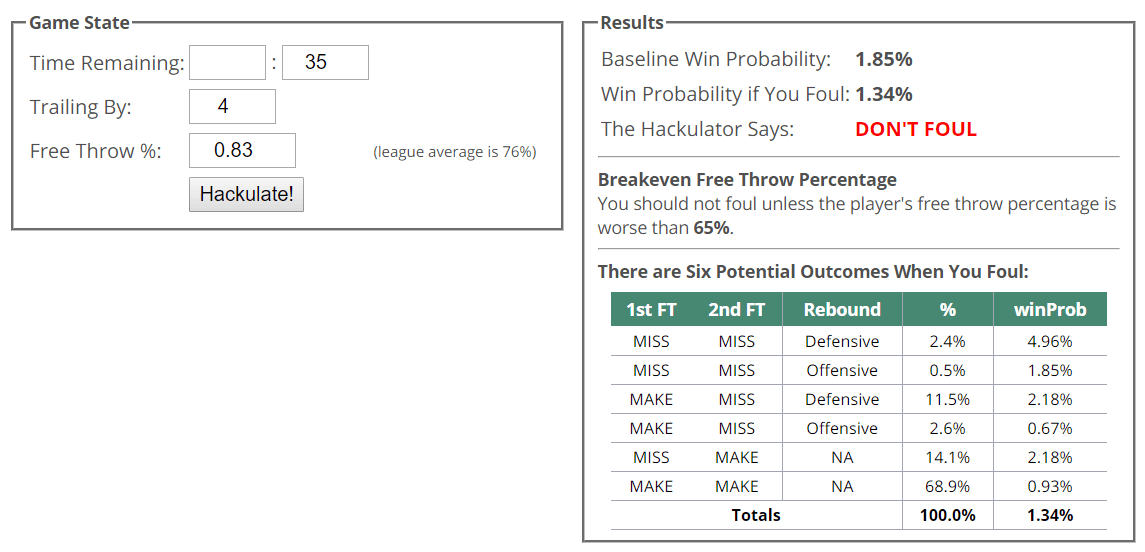
There are definite times NBA teams should foul, and Inpredictable actually found that the NBA doesn't foul enough oftentimes:
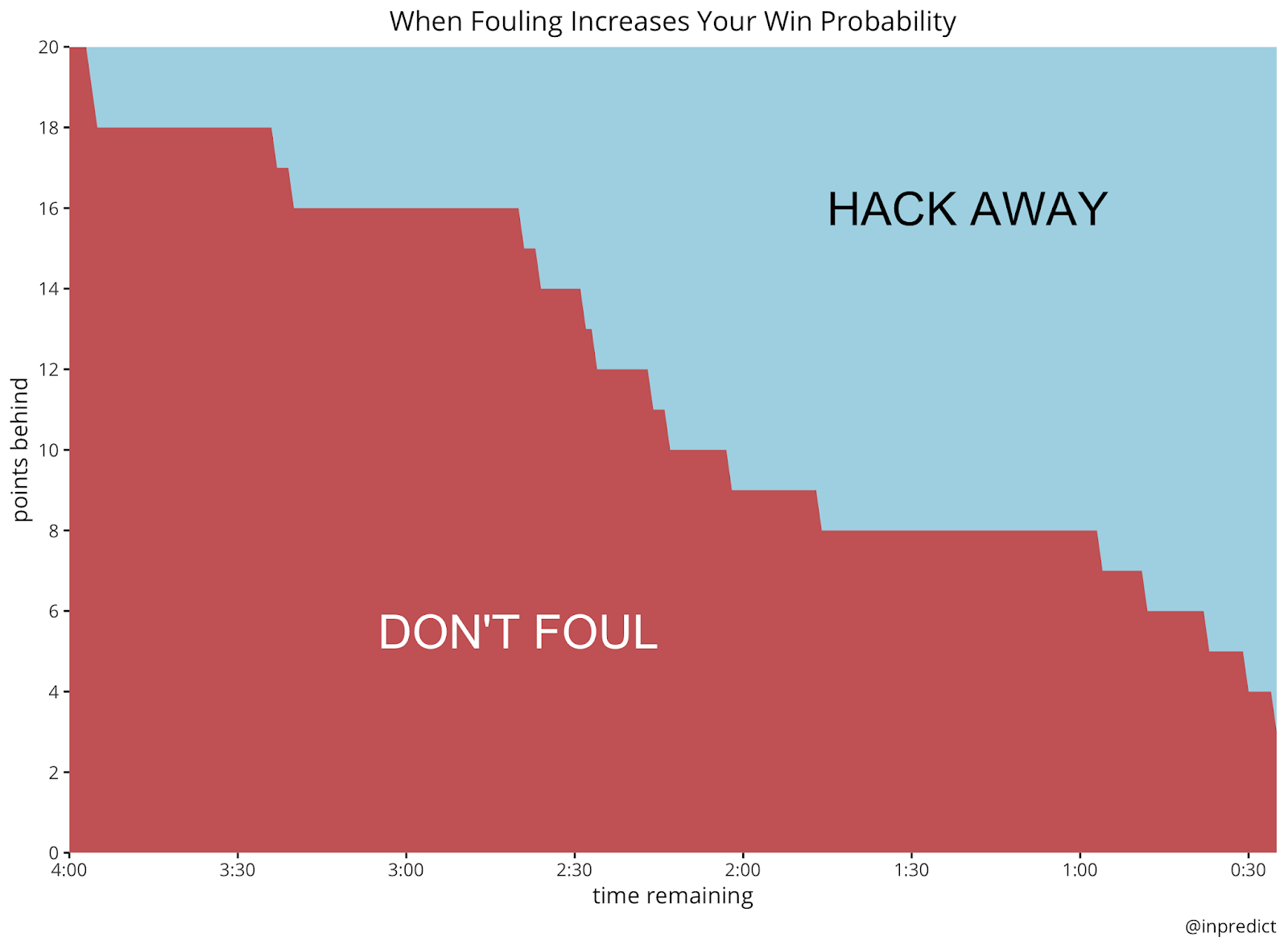
But the overall point stands: Due to better defenses, superior free throw shooters and the super important bonus rule, it's much more advantageous to foul in college than it is in the pros.


